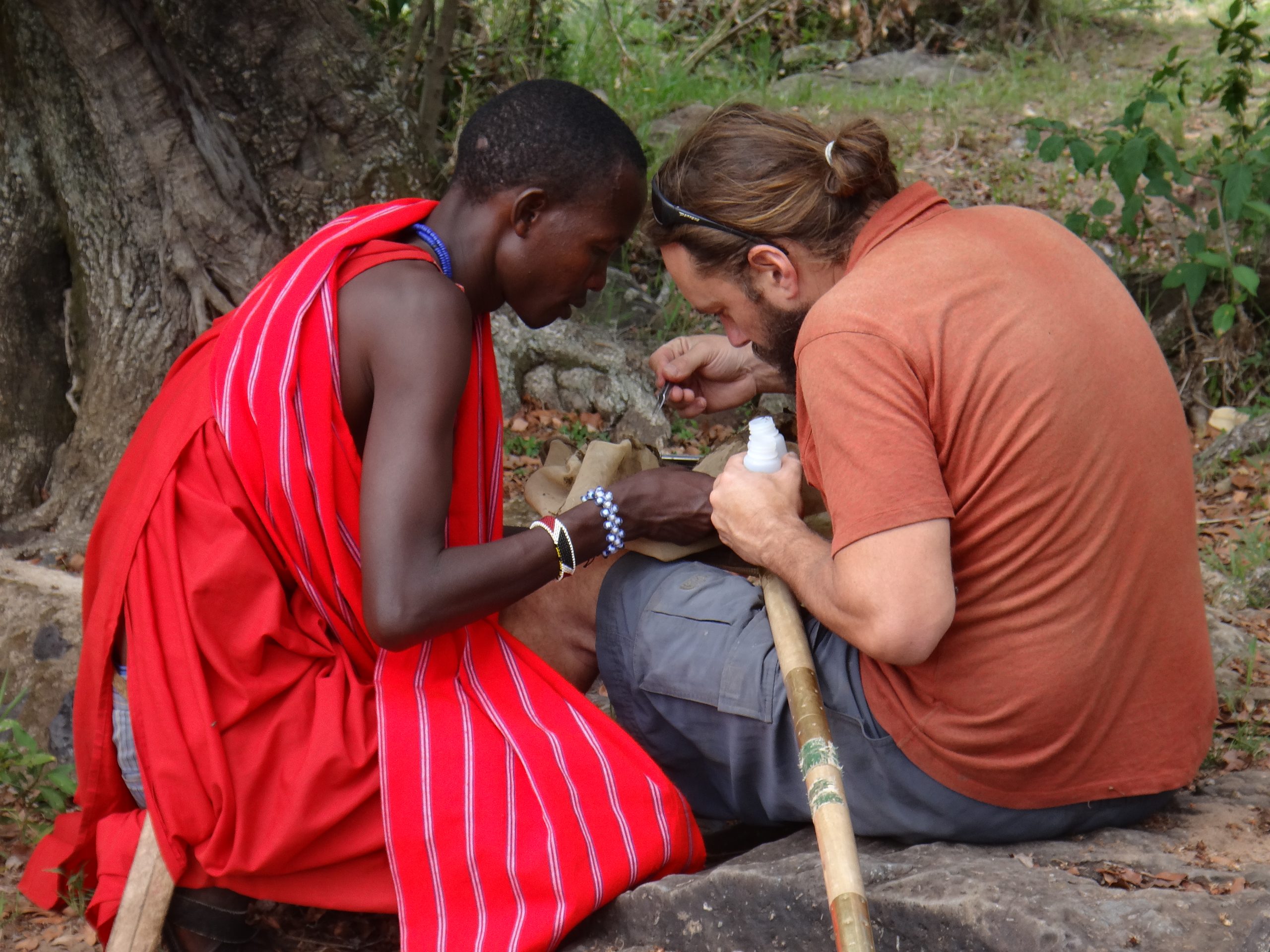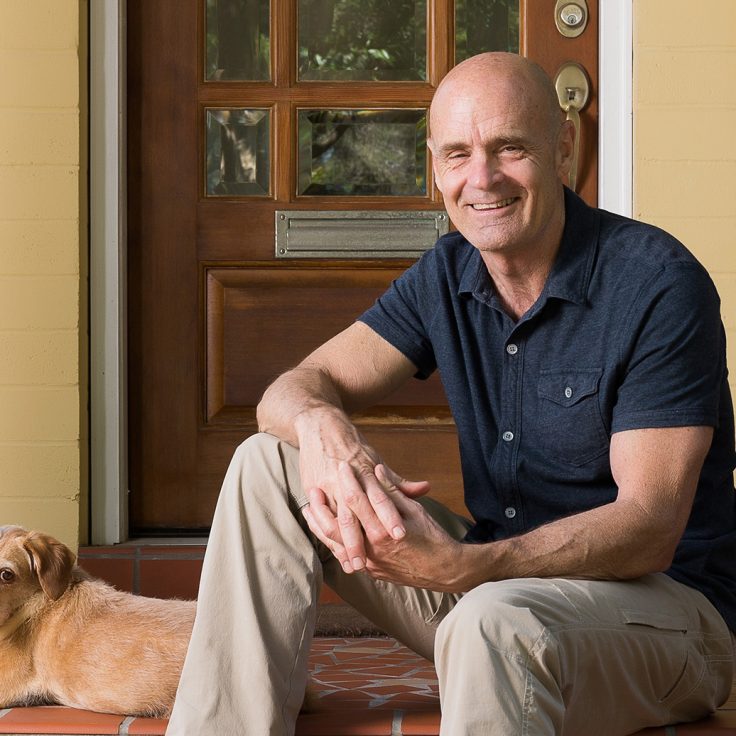
Ecologists uncover the hidden power of animals in shaping ecosystems
As day gives way to night on the Maasai Mara National Reserve, a new world awakens. A team of scientists sits within the seclusion of their research camp. They eagerly await the transformation.
Modern luxuries are sparse in the Kenyan wilderness. The camp, nestled in a wooded thicket, lacks running water or power. Here, a cluster of canvas tents offer shelter, a humble arrangement in an expanse where animals far outnumber humans. But there’s no lack of entertainment on site: The savanna comes alive at night.
From their tents, ecologists Chris Dutton and Amanda Subalusky tune in to the nightly concert. A symphony of sounds floods the darkness. No fencing separates the camp from passing wildlife, and the proximity leads to an immersive auditory experience.
When leopards hunt, they make a distinctive sawing sound, recalls Dutton. It’s a haunting indicator of the wild at work. Meanwhile, a herd of elephants, mere steps away from the campsite, rest fitfully. They’re insomniacs, clocking only about two hours of sleep per night. To an untrained ear, their presence might go unnoticed, but Dutton has become quite familiar with the peculiar sounds of their digestion.
“It sounds like someone shaking a piece of sheet metal,” he said.
GUT REACTIONS
Digestion is something to which Dutton and Subalusky are closely attuned. As zoogeochemists, they’re engrossed in understanding the role of animals in nutrient cycling. In this process, nutrients circulate from the environment into living organisms and back again, supporting life and ecosystem health.
It’s not glamorous work: There’s a lot of defecation, death, and decomposition involved. But their research is helping to connect the dots between wildlife and their environments.
“We all enjoy seeing animals in our environment, in our daily lives. We see birds in our yard. We see fireflies at night. We see deer moving through our neighborhood,” Subalusky said.
“Our research is really focused on understanding how those animals aren’t just passing through, but are actually shaping the ecosystems that they live in.”
The duo has taken a deep dive into the guts of the animal kingdom, uncovering how vital digestion is for ecological balance. Their studies show how when animals consume and process food, they subsequently expel not only waste but also carbon, nutrients, and gut microbes that can greatly affect the surrounding environment.
The scientists collect samples and analyze them back at their research hub on the University of Florida’s main campus, the Subalusky Lab. Their investigations span a variety of ecosystems and animal interactions, but their interests lie heavily with animals that move between land and water.
Water bodies often serve as hubs of wildlife activity. Animals congregate around the water and transfer resources from different parts of the landscape to these aquatic centers. While water predominantly moves downstream, animals have the ability to move resources in various directions, including uphill. Subalusky describes this as the Earth’s natural circulatory system.
She points out that while microbial and plant communities are often the focal points of ecological observation, animals play a pivotal role in shaping ecosystems through their ability to concentrate and distribute nutrients.
“Animals move nutrients across landscapes, sometimes in complex ways and sometimes over far distances,” Subalusky said. “So, they can actually have kind of a disproportionately important impact on ecosystem processes.”
Subalusky posits that the tendency to underestimate animals’ ecological impact may stem from the massive declines in wildlife populations, which obscure the visibility of these once-numerous species.
However, that’s not the case in the Serengeti Mara, where large animal populations still dominate the scene.
“In a place like that, it’s much easier to see how strongly animals can impact ecosystems,” she said.
LIQUID ASSETS
Despite the challenges presented by wildlife and natural events, which have led to the loss of thousands of dollars in equipment, the Mara remains a rich and rewarding field for research. Since 2008, Dutton and Subalusky have collaborated with Kenyan institutions and local communities, including the Indigenous Maasai people, who have coexisted with the region’s wildlife for centuries. The team has stationed data collection systems throughout the basin, allowing them to remotely monitor environmental dynamics.

Over 4,000 hippopotamuses reside in this region, partaking in group wallowing in the rivers. Each animal consumes nearly 100 pounds of food daily, accumulating significant waste in the pools where they linger. Dutton has noted that this behavior, while primarily a cooling mechanism, could also play an essential role in the nutrient cycle of the region.
He discovered that the microorganisms in hippo-infested pools bear a closer resemblance to those in the hippo gut rather than to those in typical river water. The team coined the term “meta-gut,” reflecting the altered aquatic environment when infused with the hippo’s microbes. The phenomenon may benefit the hippos, functioning “almost like a probiotic shake,” according to Dutton. Interestingly, hippos bathing in these enriched pools appear to display less stress and aggression, hinting at the meta-gut’s role in modulating their behavior.
“It’s a really novel perspective,” Subalusky said. “I don’t think people thought that animals could have this strong of an influence on the shaping of microbial communities.”
INTO THE WILD
The Mara hosts the world’s largest remaining overland migration. Each year, more than 1.3 million wildebeest cross this treacherous terrain, with many perishing in the river. Subalusky’s research reveals that their decomposing bodies fuel the river for months or even years afterward, a true display of the circle of life.
This phenomenon offers a window into historical ecosystems once shaped by large herds, such as the 30 million to 60 million bison that roamed North America’s Great Plains. These herds similarly encountered mass drownings in river crossings, influencing the evolution of the landscape. Now, studying the Mara has inspired the researchers to undertake studies that help us better understand the impacts of large migrations and the resulting changes in the American West due to the bison decline.
Additionally, the team is exploring the ecological impacts of hippos in an unexpected landscape: Colombia. Drug kingpin Pablo Escobar imported four hippos to his estate in the 1980s. After his death, they escaped to the nearby Magdalena River, where they have since formed a feral population growing at an annual rate of 9.5%. The Subalusky Lab is collaborating with international experts to model their population growth and evaluate potential ecological and community impacts under various control strategies.
Closer to home, Dutton and Subalusky are investigating Florida’s diverse fauna and impacts on waterways. They’re co-leading a study on seasonal wetlands, a key yet unprotected habitat under the Clean Water Act, to explore their ecological and hydrological connectivity. American alligators play a pivotal role here, acting as ecosystem engineers as they burrow. Additionally, the team is exploring how water level variations can impact carbon cycling.

They’re also turning their attention to the University of Florida’s campus, where they plan to develop a center to study animal movement and landscape connectivity. Their objective is to transform the campus into a dynamic living laboratory that tracks the movements of its notable animal residents, including alligators, bats, and squirrels.
Stepping back, Dutton and Subalusky’s work reaffirms a vital yet often overlooked principle: Across every corner of the globe, animals play unseen but essential roles in balancing our ecosystems. Through actions like nutrient cycling, they support ecological health, which, in turn, lends humans a helping hand in providing access to clean water and fertile soil. Preserving biodiversity is not just about saving animal species; it’s also about protecting the delicate ecosystem services that human communities rely on.
“The animals that we share our world with also help shape our world,” Subalusky said.


